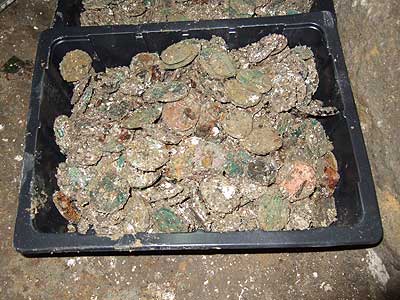A set of chalk tunnels in Court Wood, Southfleet were brought to the attention of the Kent Underground Research Group in September 1982 by a local resident in nearby New Barn Road.
The tunnels were entered via a crater like hollow on the northern edge of the wood at NGR TQ 6205 6992. This depression marks the site of the collapsed original entrance shaft. The longest gallery was found to be 12.5m long and 1.7m high so that some form of underground transport, probably a simple barrow, must have been used to carry the chalk from the working face. This contrasts with the simpler denehole excavations where the chalk was hauled up directly from the face. In comparison with a mediaeval denehole, the galleries at Court Wood had been crudely cut with little care taken to trim the walls or roof. It was this lack of care or skill that probably lead to the collapse of the shaft. Another contributing factor was that very little chalk had been left for roof thickness, with only 1.7m separating the roof from the surface. There have been a number of similar small mines recorded in the area as well as mediaeval deneholes and 19th century chalkwells.
No definitive dating evidence was found but the style of mining and the lack of knowledge of mining mechanics would suggest that it was a small mine dug for agricultural chalk by local farm labourers in the late 18th early 19th century.
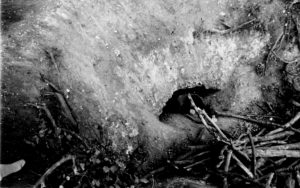
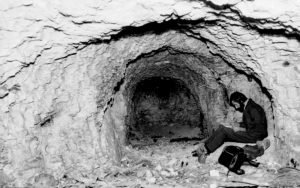
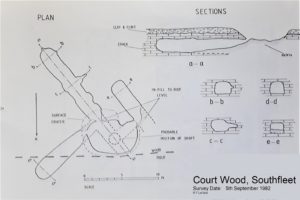
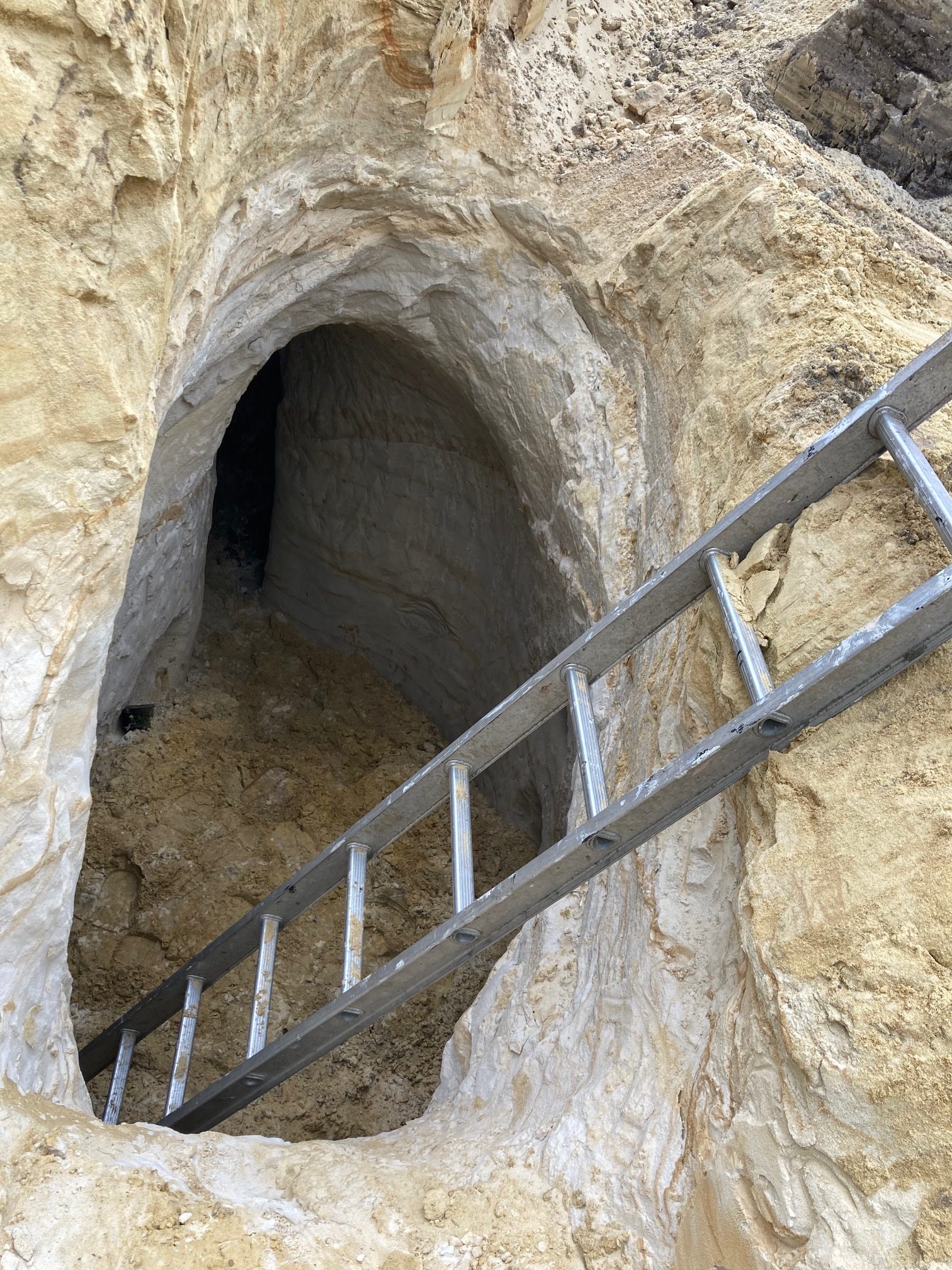
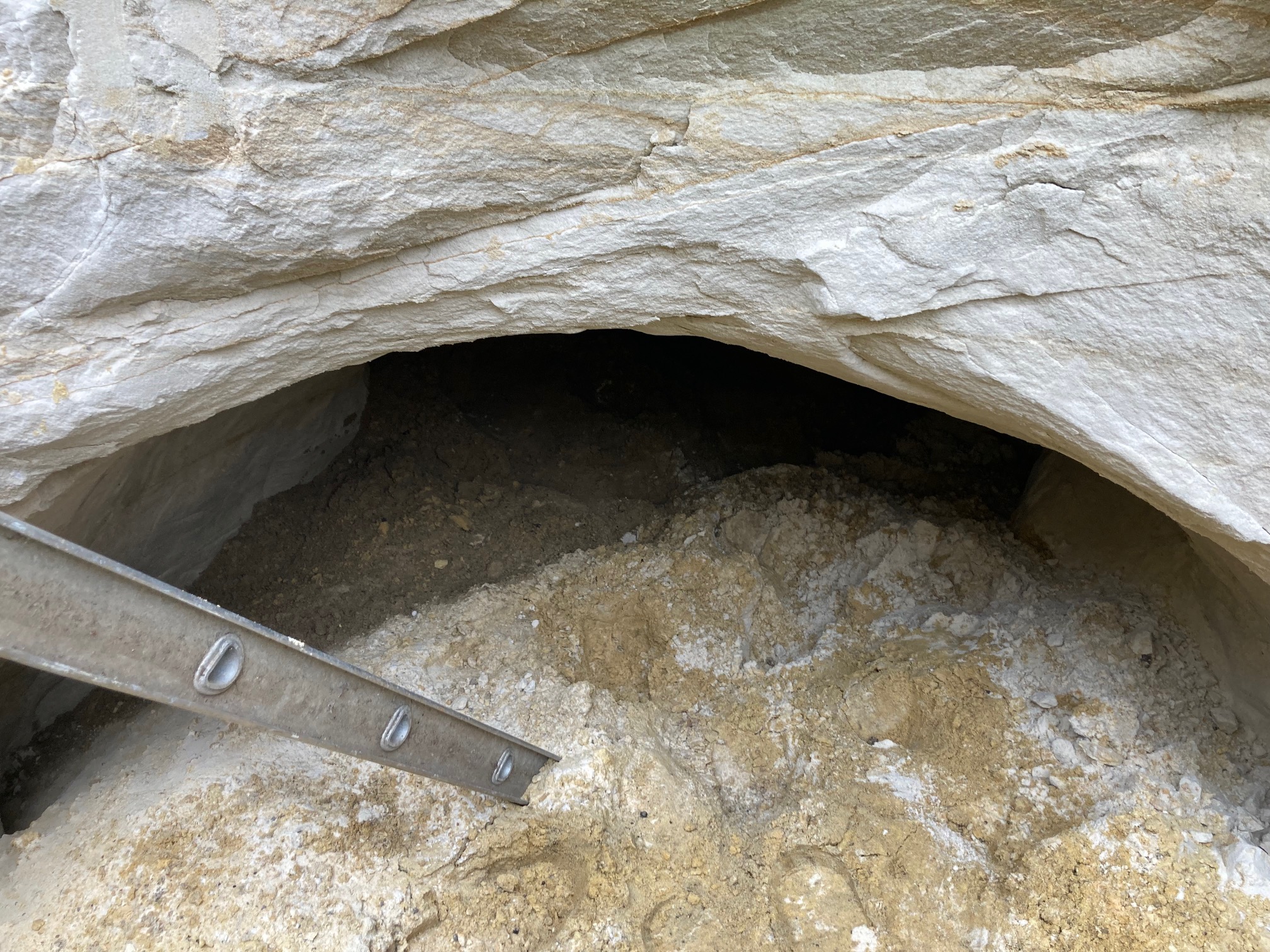
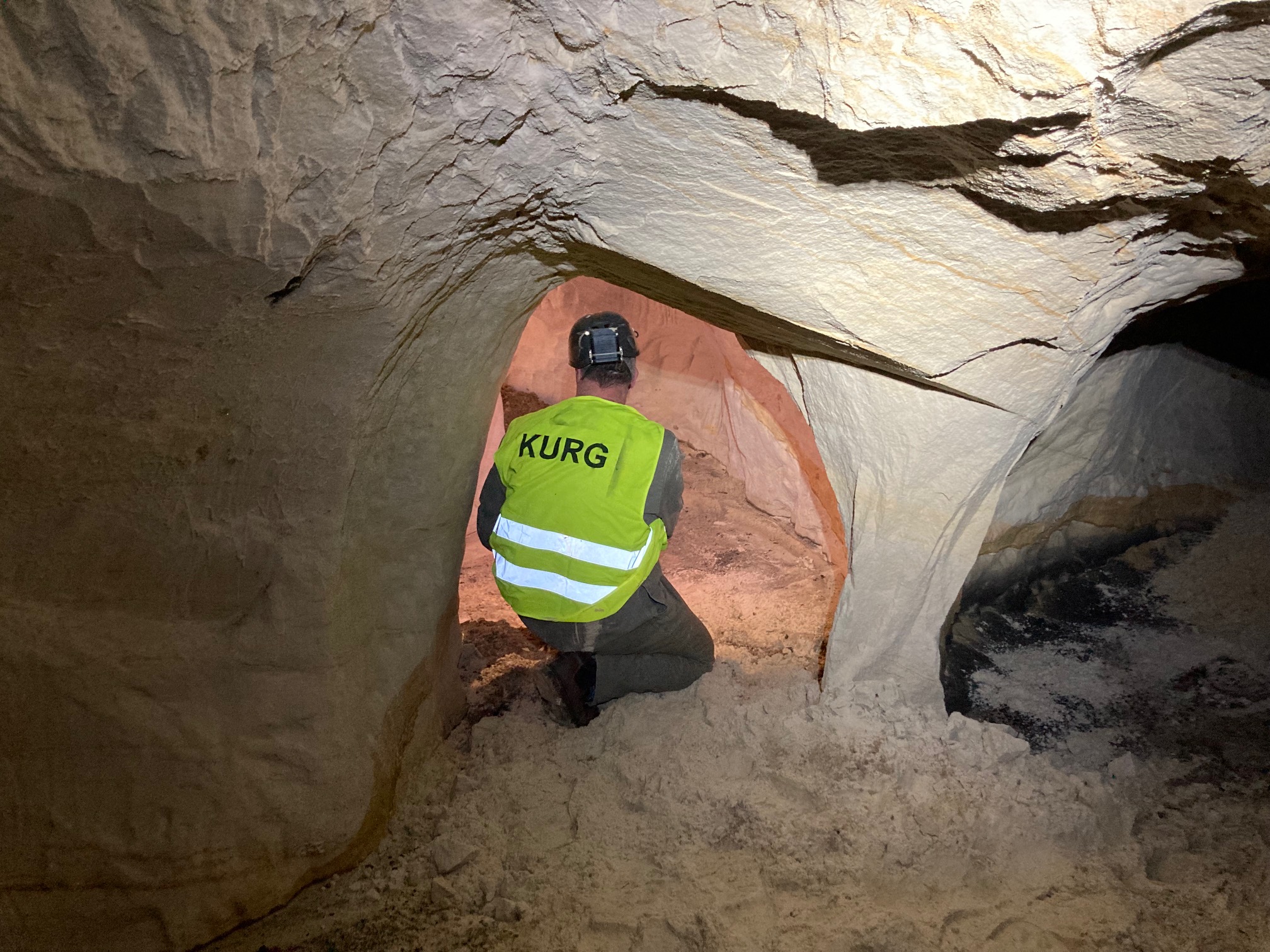
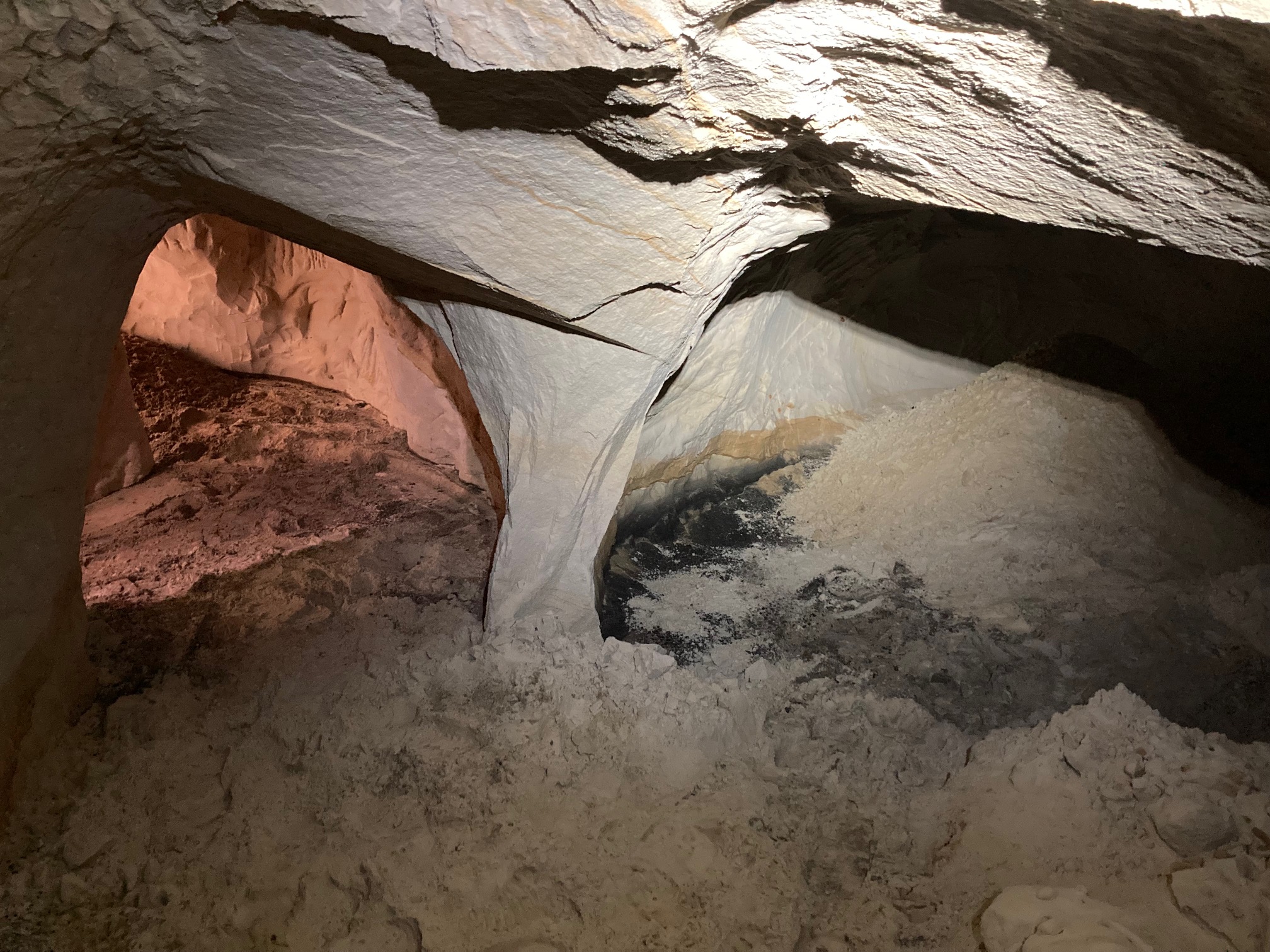
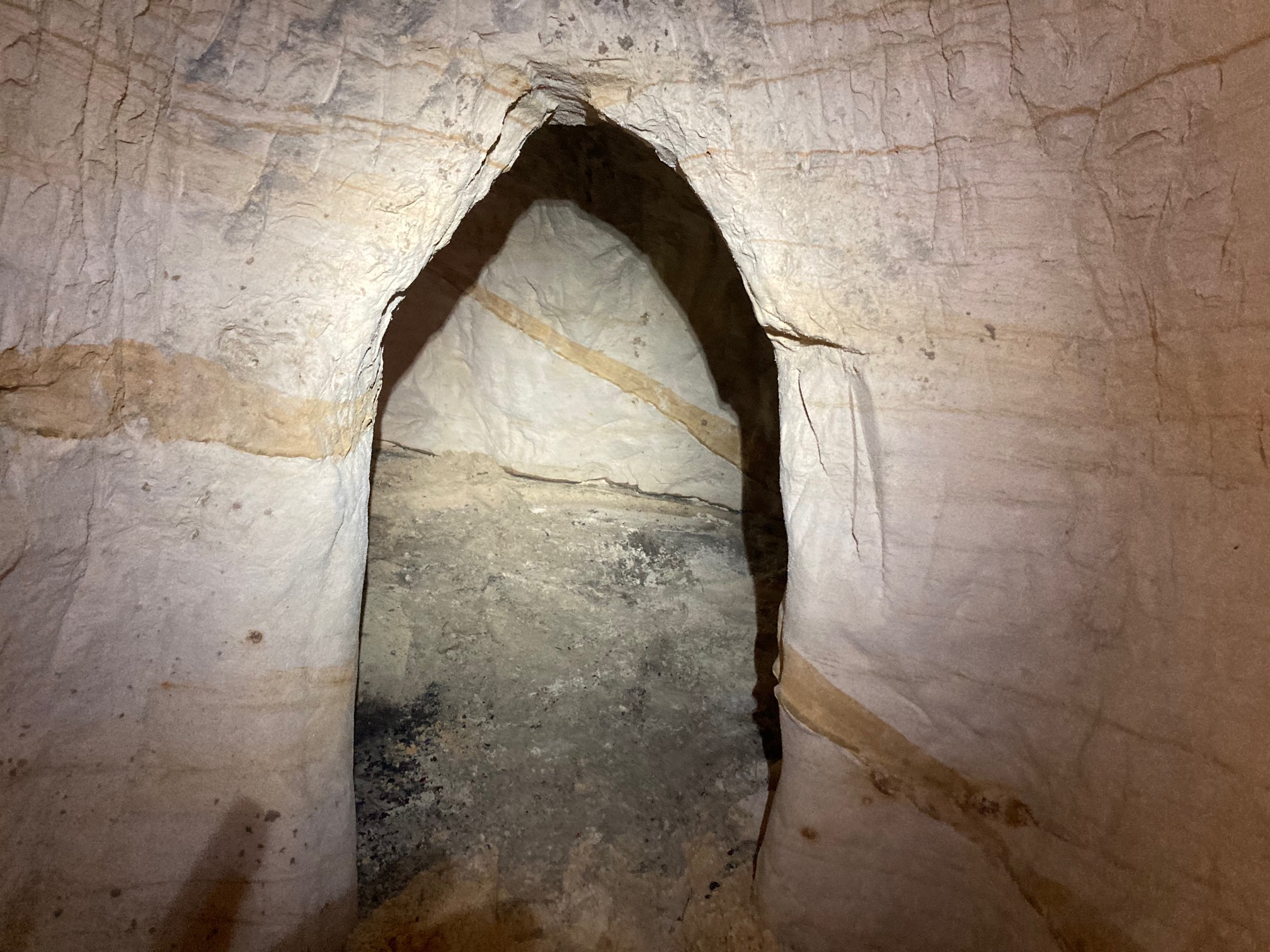
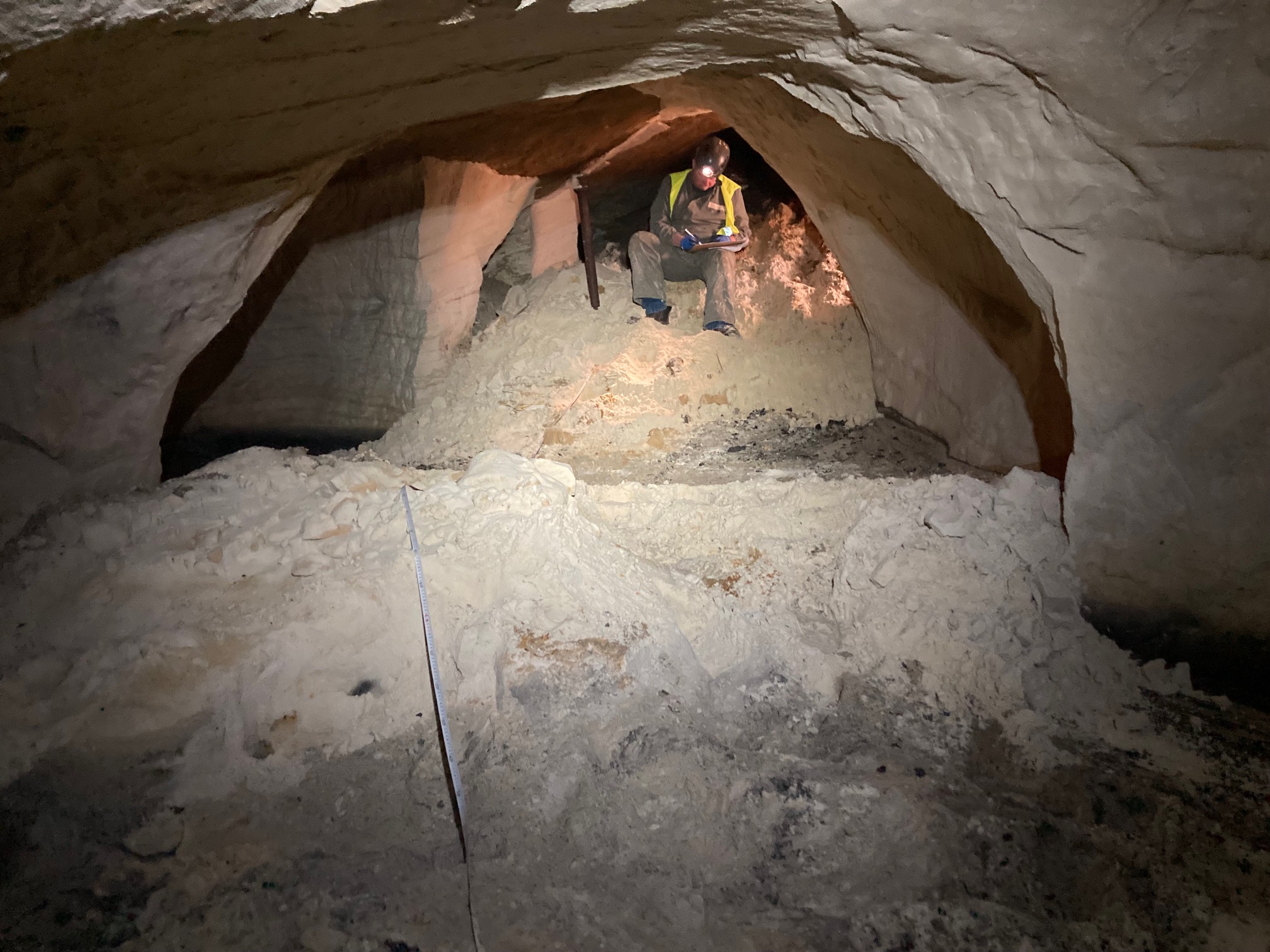
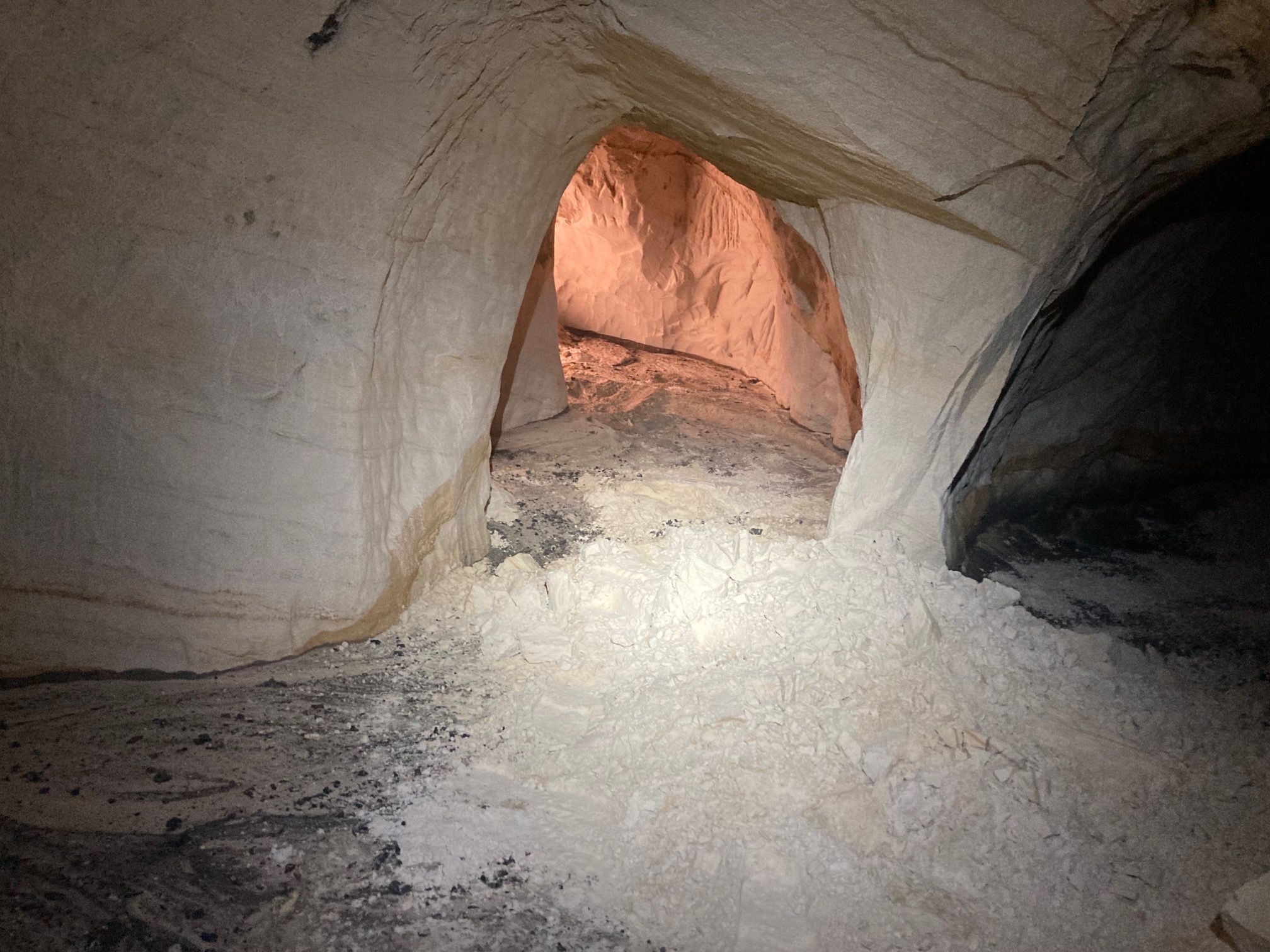
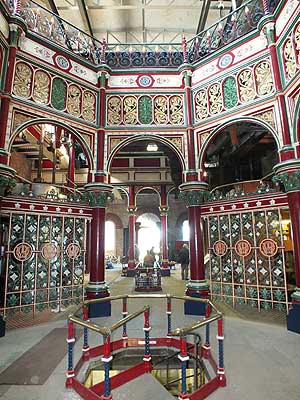
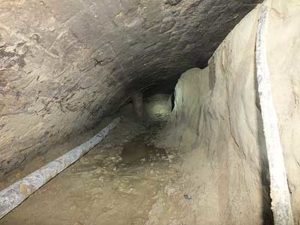
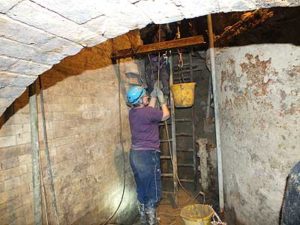
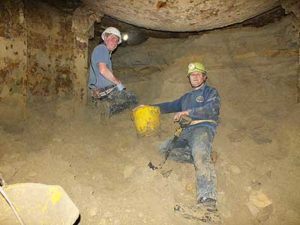
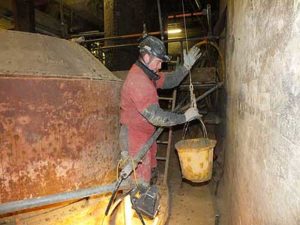
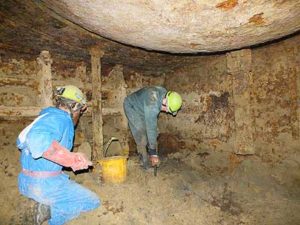
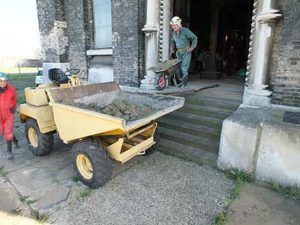
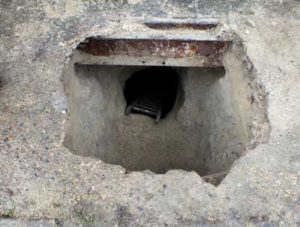
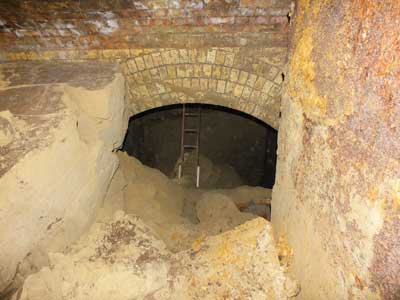
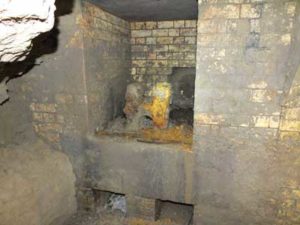
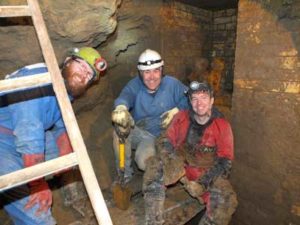
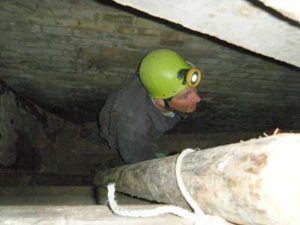
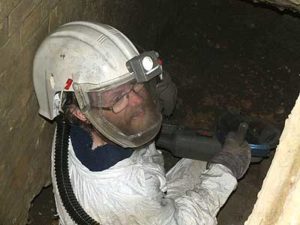
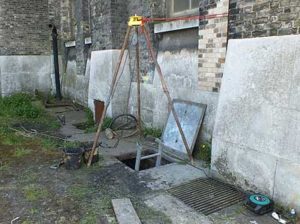
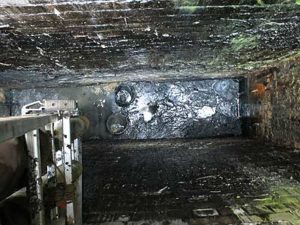
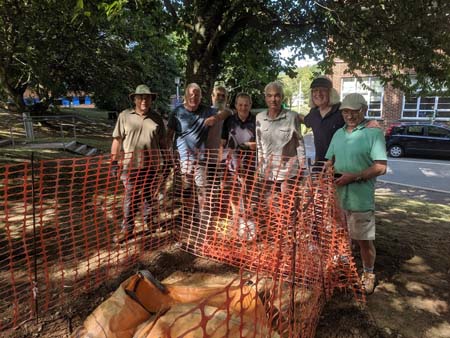
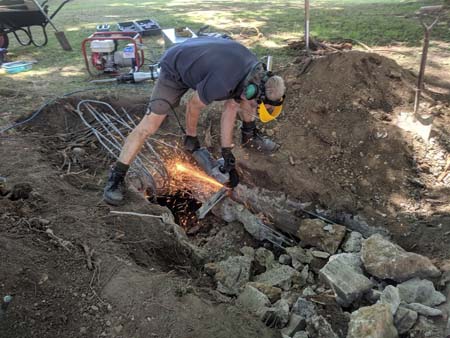
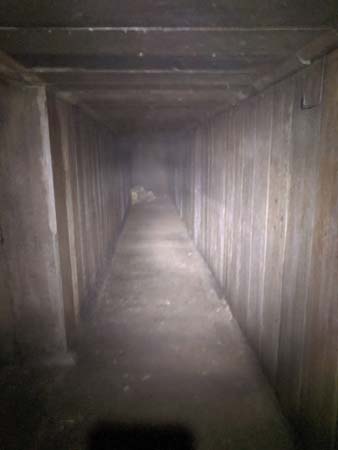
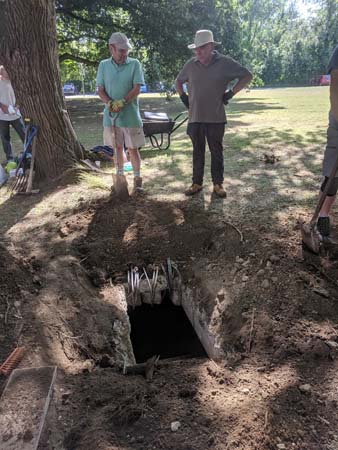
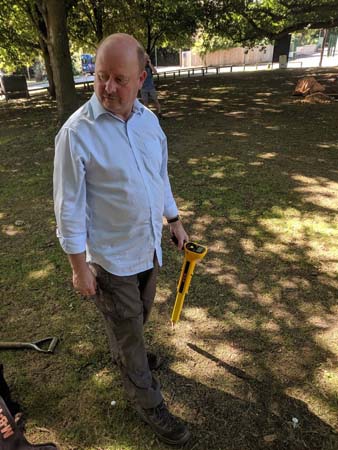
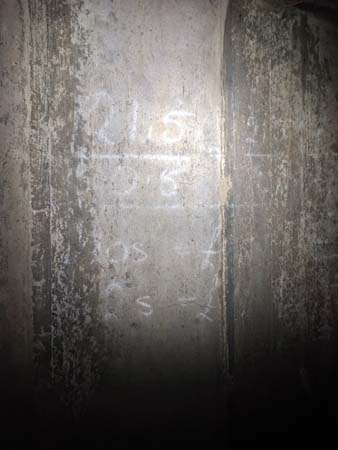
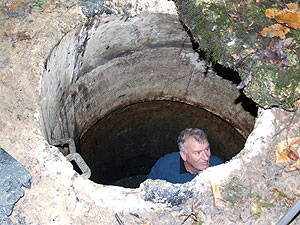

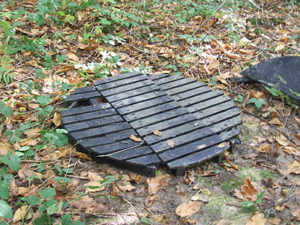


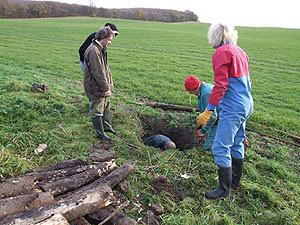
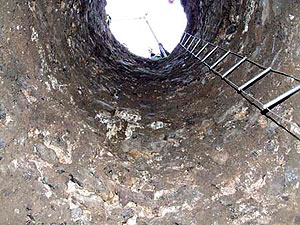
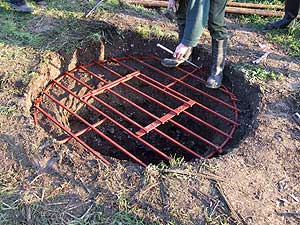
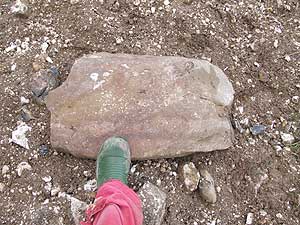
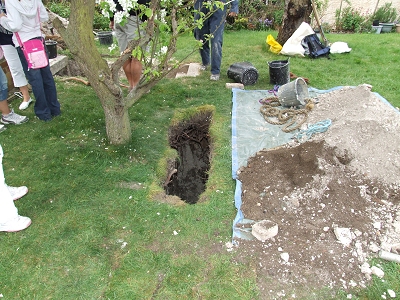
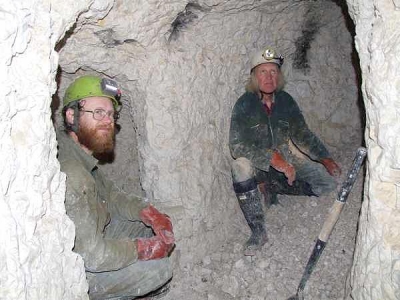
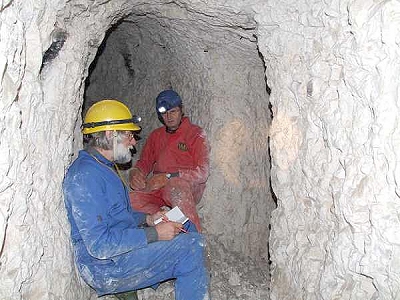
 17th December Work started on this dig. An aerial cable was placed across the hole using the fence posts for support. A second lifting cable and ingenious pulley system was hung below this to enable the bucket to be raised and then moved sideways.
17th December Work started on this dig. An aerial cable was placed across the hole using the fence posts for support. A second lifting cable and ingenious pulley system was hung below this to enable the bucket to be raised and then moved sideways.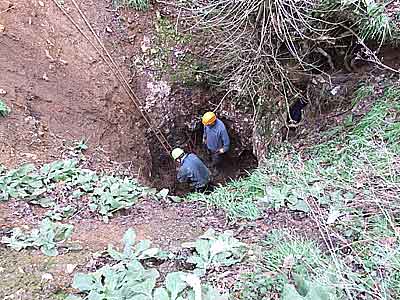 28th January After another early start 2 members who wont be named decided to take the exercise and walk the ‘short’ way across the fields to the dig. Unfortunately they took a wrong turning somewhere and ended up going completely the wrong way. They arrived about 1 hour after they left the car park. Progress was slow because the excessive amounts of wire in the hole and we even had to resort to using a car to pull it out. We didn’t get as much done as we would have liked to but we think we can now see the top of the chamber.
28th January After another early start 2 members who wont be named decided to take the exercise and walk the ‘short’ way across the fields to the dig. Unfortunately they took a wrong turning somewhere and ended up going completely the wrong way. They arrived about 1 hour after they left the car park. Progress was slow because the excessive amounts of wire in the hole and we even had to resort to using a car to pull it out. We didn’t get as much done as we would have liked to but we think we can now see the top of the chamber.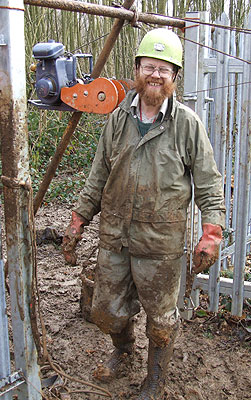 25th February Work continued and good progress was made despite the weather. We managed to remove lots of wire along with many old logs from the hole. At the end of the day the top of a small chamber was visible.
25th February Work continued and good progress was made despite the weather. We managed to remove lots of wire along with many old logs from the hole. At the end of the day the top of a small chamber was visible.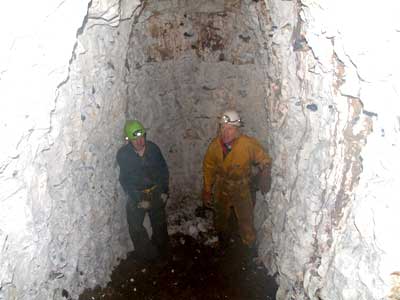 25th March Despite a promising start the top of the chamber visible last time has so far been a bit disappointing. Although just big enough to crawl into it seemed to be very small and almost entirely back filled. However after several hours of digging a small entrance was found about 120° from the small one. Clive was the first to enter and explore this, despite an initial concern about the quality of the air. The chamber turned out to be larger then expected and unusual in design as it turned through 90°. This chamber is about 20′ long by about 6′ wide with a height of about 10′. There is another small chamber off the back of this which looks as if it may connect to the small chamber first discovered. For more pictures
25th March Despite a promising start the top of the chamber visible last time has so far been a bit disappointing. Although just big enough to crawl into it seemed to be very small and almost entirely back filled. However after several hours of digging a small entrance was found about 120° from the small one. Clive was the first to enter and explore this, despite an initial concern about the quality of the air. The chamber turned out to be larger then expected and unusual in design as it turned through 90°. This chamber is about 20′ long by about 6′ wide with a height of about 10′. There is another small chamber off the back of this which looks as if it may connect to the small chamber first discovered. For more pictures 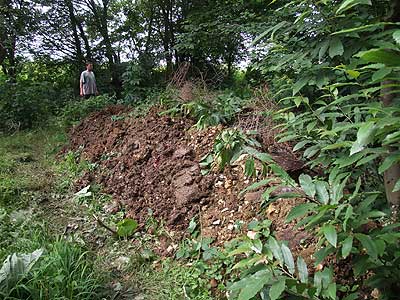 15th July It was amazing to see just how much growth had taken part since we last visited. Nature seems extreamly keen on reclaiming the hole and the surrounding area. Despite further digging the only thing we found was a mouse in one of the holes made to probe for the third chamber. After some deliberation it was decided to persue the dig no further. The bats will have to make do with a single chamber. The picture shows the spoil heap from the dig. For more pictures
15th July It was amazing to see just how much growth had taken part since we last visited. Nature seems extreamly keen on reclaiming the hole and the surrounding area. Despite further digging the only thing we found was a mouse in one of the holes made to probe for the third chamber. After some deliberation it was decided to persue the dig no further. The bats will have to make do with a single chamber. The picture shows the spoil heap from the dig. For more pictures 
